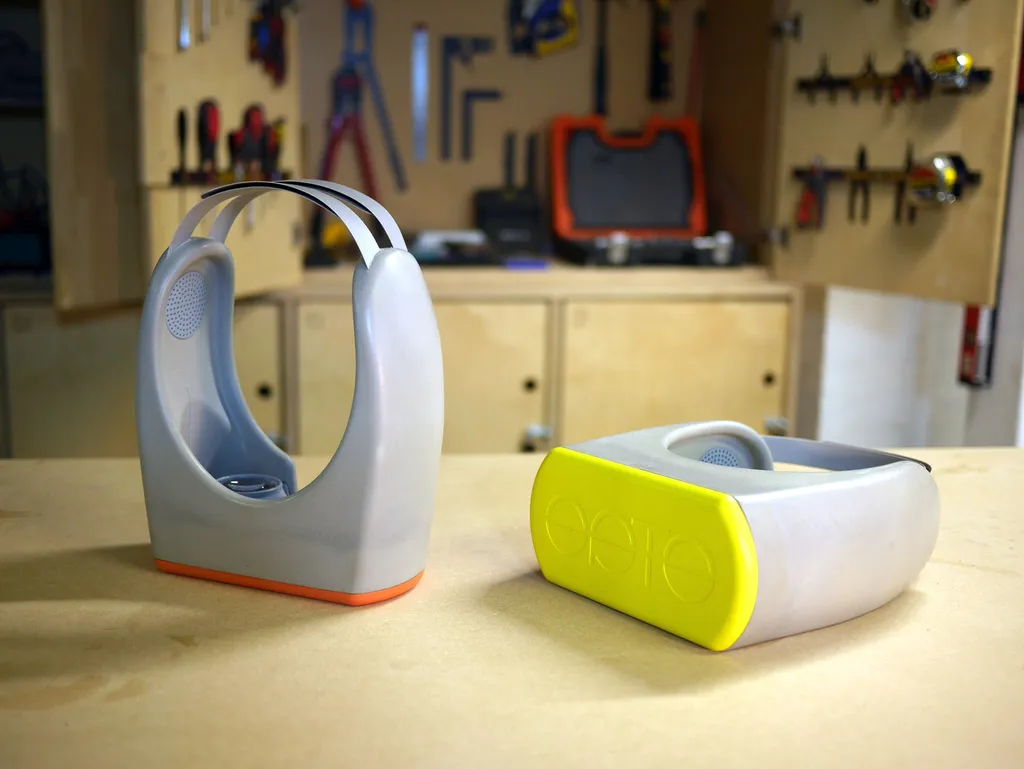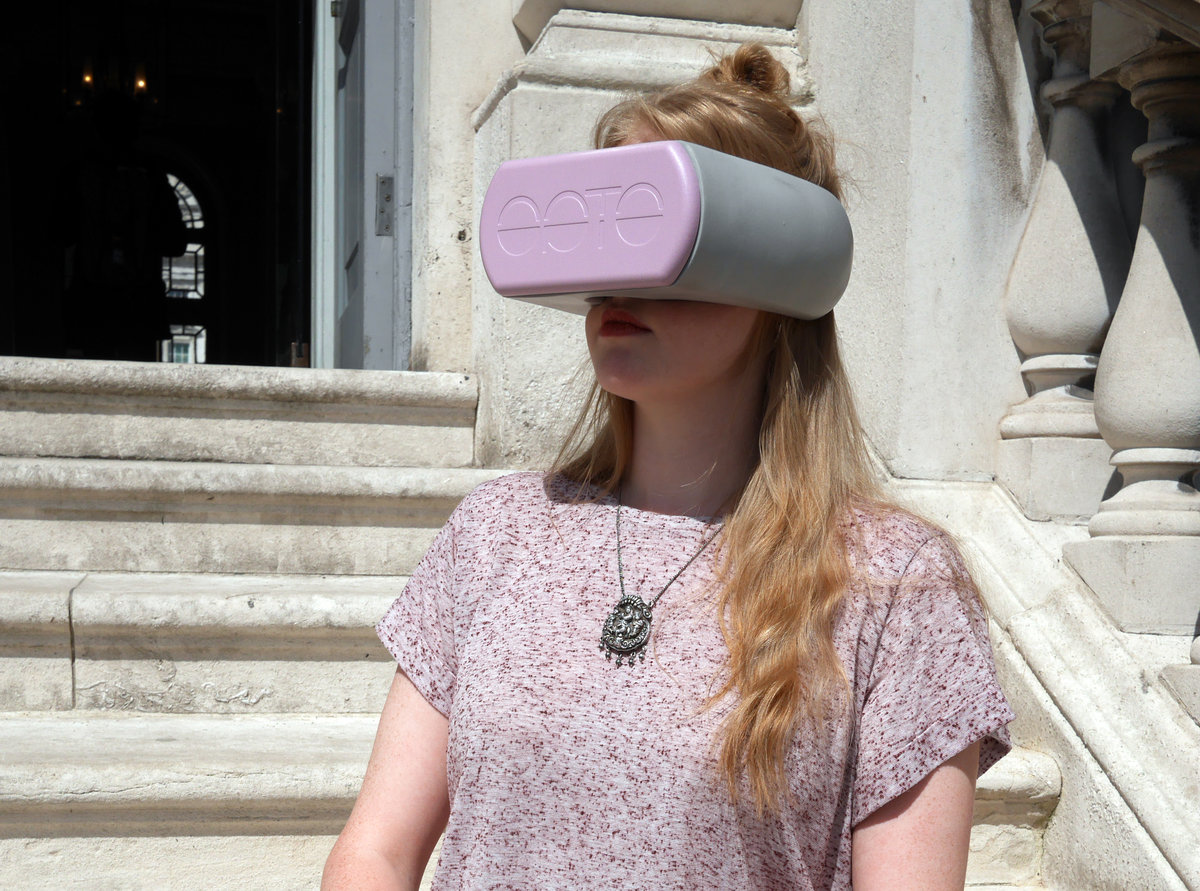Between Gear VR and the rumoured Google HMD, you might not think there’s much space for another mobile VR device on the scene. Opto begs to differ.
Pegged as “Virtual Reality for the living room”, Opto is another smartphone-powered VR kit, designed by Tom Jarvis and Richard Stephens and created at the Somerset House incubator in London. So why pay attention to this HMD over any other?
Opto claims to have five major advantages over its competition. The first is built-in audio, which is a first for any mobile device. Instead of playing sounds through the smartphone itself or plugging in a pair of headphones, this uses two 40mm 32ohm speakers that fit around the ears for a completely immersive experience without the need for extra wires. It’s also made from a lightweight foam that aims to increase comfort over the likes of Google Cardboard, though it remains to be seen if it could match MergeVR’s impressive ergonomics.
Elsewhere, Opto claims its biconvex lenses are 25% larger than other major HMDs, granting a 100 degree FOV that would barely beat the Gear VR’s 96 degree offering. Intriguingly, Opto also has a magnetic cover to hold your phone in place when in use. Finally, the headset boasts compatibility with any phone from 4 to 5.5 inches big, which means you’ll be able to access the vast library of Google Cardboard compatible apps..
Opto is looking to achieve all of this through crowdfunding. In fact, the company is nearing completion of a Kickstarter campaign, having raised around $53,879 of its $56,962 goal at the time of writing. Anyone that’s backed $93 or more – or was lucky enough to get in on the early bird tier of $71 – is scheduled to get the unit around October. There are also tiers that offer discounts on batches of headsets. The kit will arrive in one of three different colours, and backers will get to decide which three the company uses.
With its Kickstarter looking to be a success, then, Opto could be something to pay attention to in the mobile VR space. It seems as if its main competition won’t be the Gear VR or Google Cardboard but the aforementioned MergeVR, another mid-tier headset that fits comfortably between low and high-end mobile VR.






























